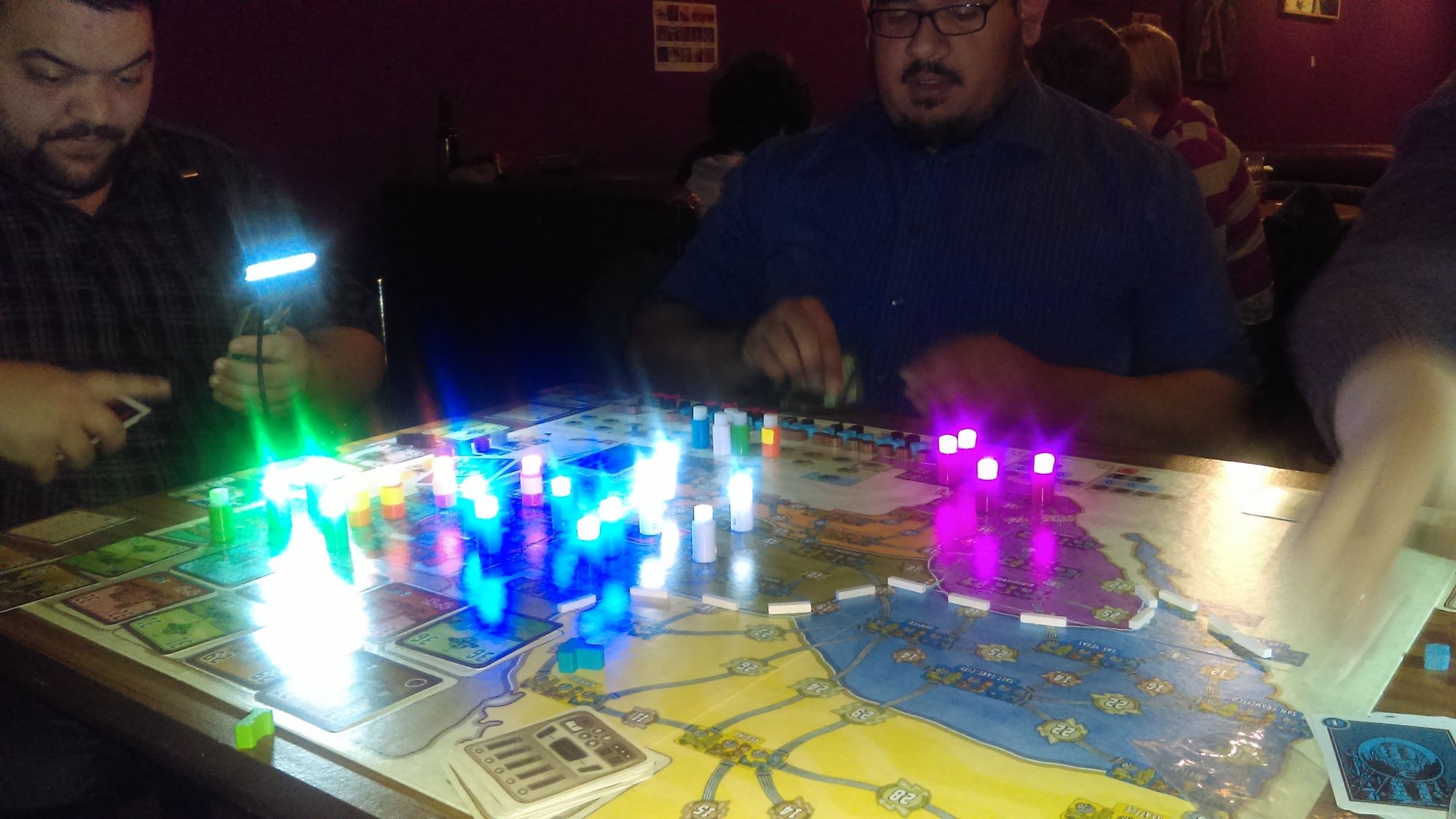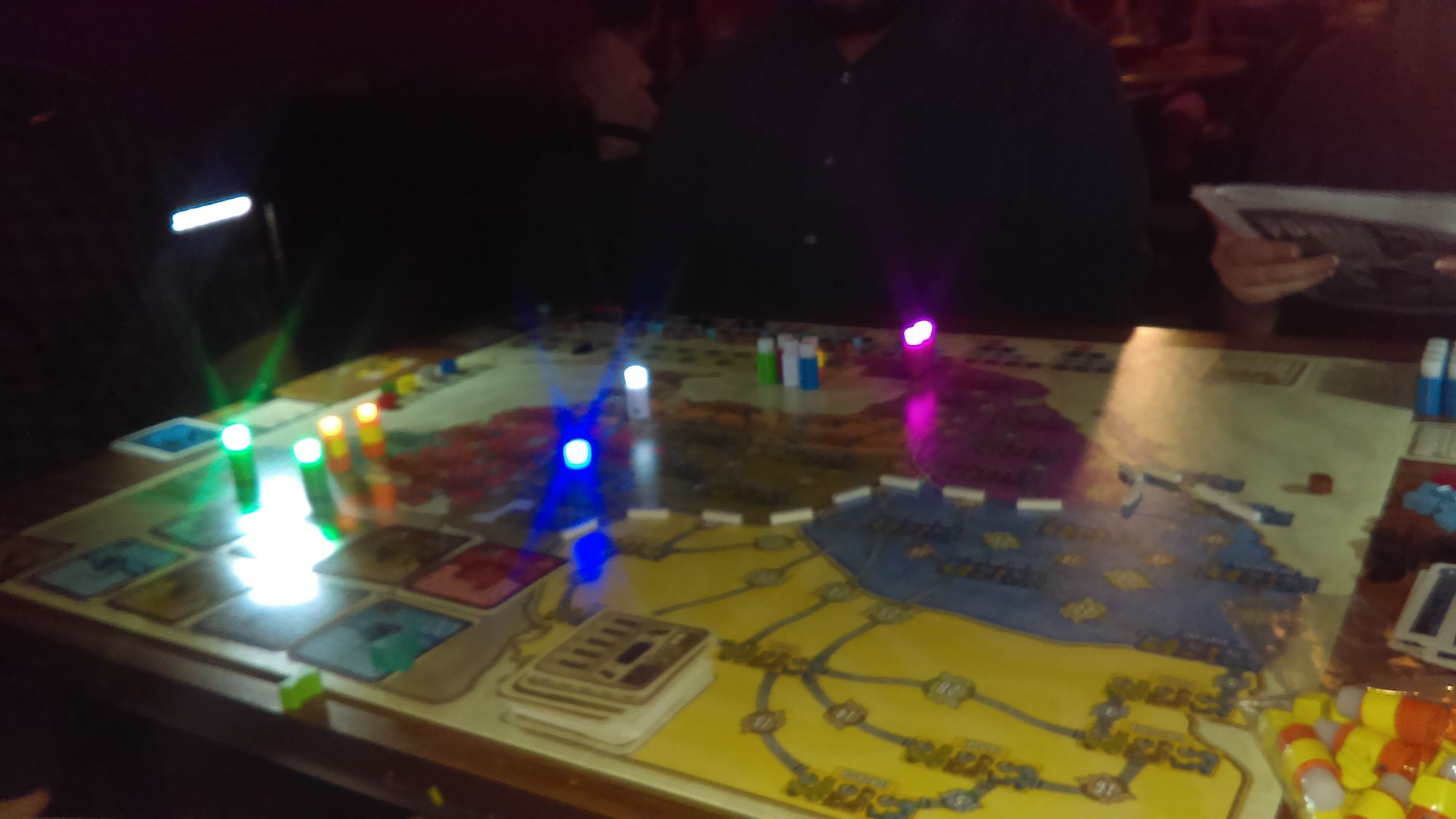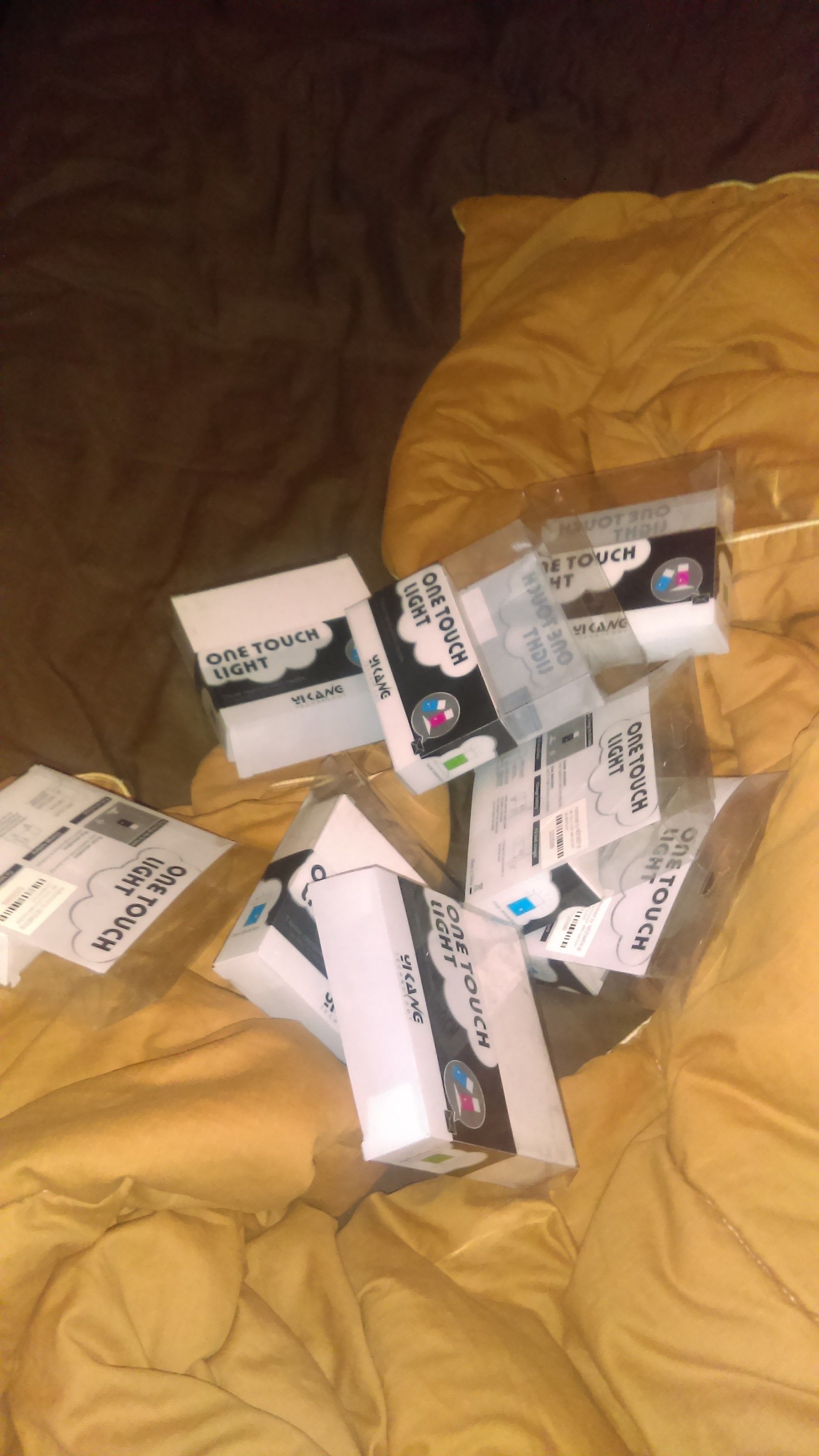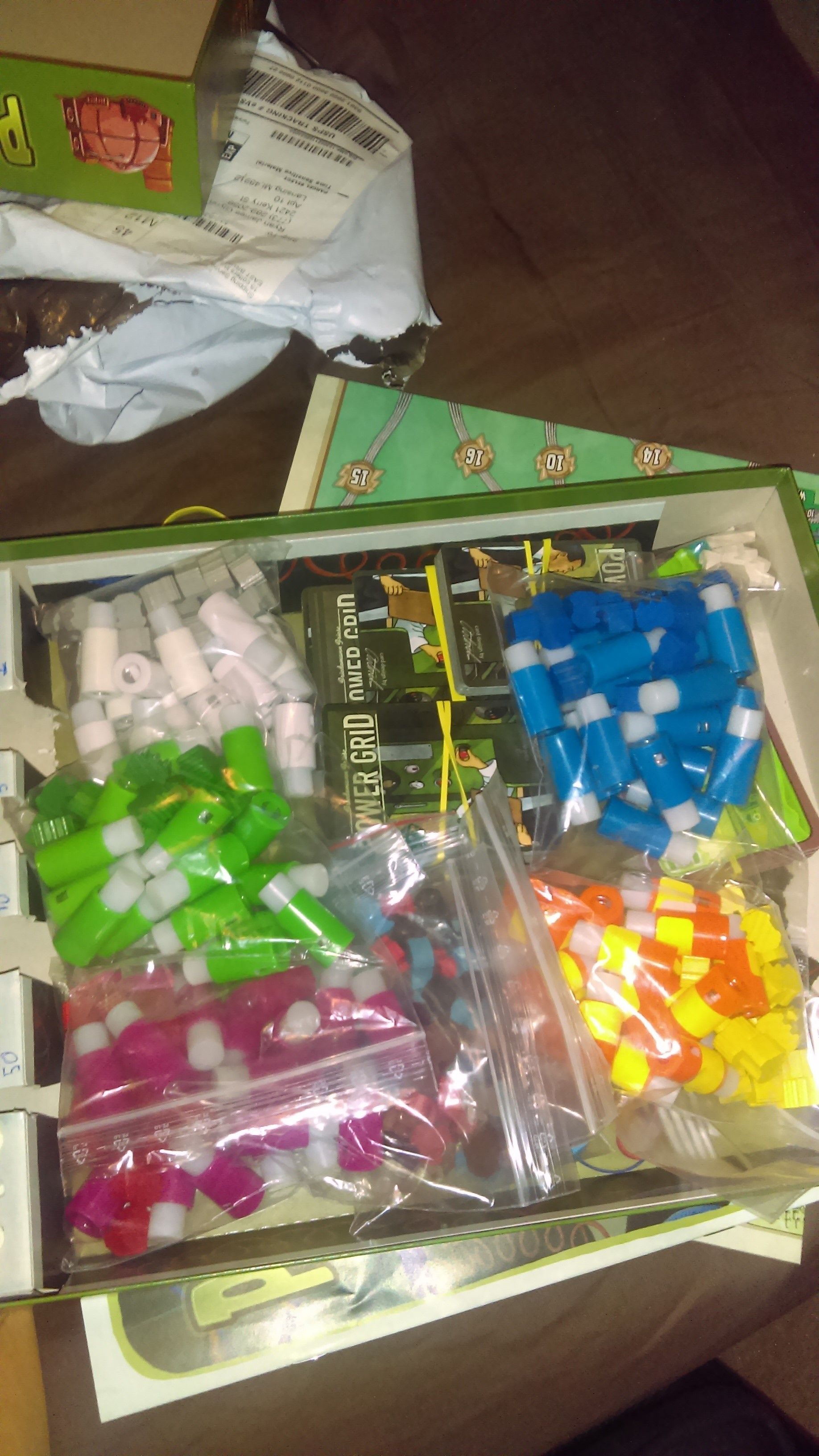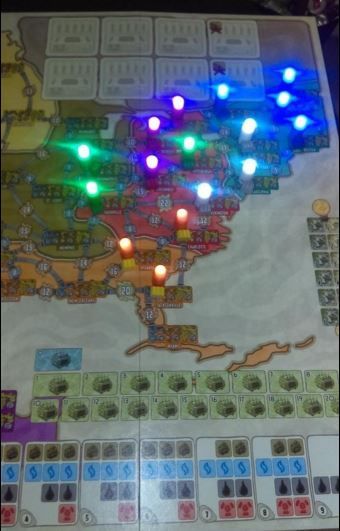Playing With Power
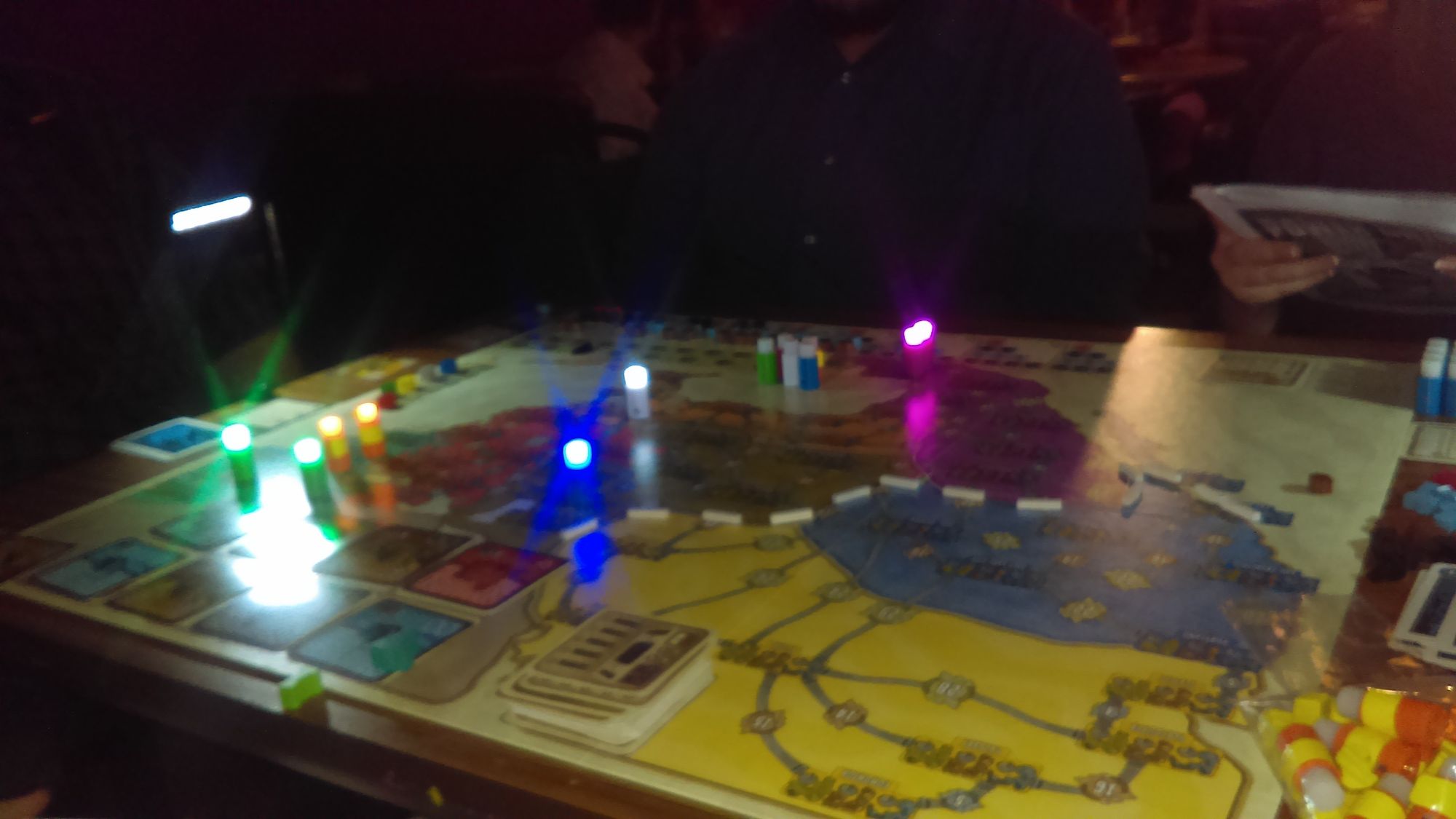
by Ryan G.
One of the perennial favorites of any board game night is the Euro-game “Funkenschlag”, or Power Grid, by game designer Friedemann Friese. In Power Grid, you play the role of competing utility monopolists (possibly German industrialists) vying for control of power grids across the globe.
The original edition, the two playable maps are Germany and the USA. Though I believe the definitive edition of the game is “Power Grid Deluxe” which features the maps of North America and Europe on the obverse side. Purchasing this edition alone (2014) is a vast improvement over Power Grid (2004). It features a larger map, cleaner artwork, and more iconographic resource tokens. Though the look of the new edition is much more cheerful, for me it still didn’t evoke images of the Diskothek one thinks of when playing a German game about lighting cities. I wanted the game to make you really feel like you were in charge generating power to cities with your German ingenuity. I looked to bring power to Power Grid.
When one plays Power Grid, one cannot help but think of the Simpsons episode Burns Verkaufen der Kraftwerk in which Mr. Burns, the wealthy owner of Springfield’s nuclear power plant, promptly sells the plant when German investors offer him the best deal. Likewise, Power Grid features an auction mechanic where power plants enter the market and are sold to the highest bidder. Germany is renown for its wealth equality, but democratic principle will not get you far in Power Grid. You must effectively squeeze the competition out of the market and be the first player to connect 15-17 cities to achieve victory.
As the game progresses, the power plants up for auction become increasingly energy efficient. While you start with the equivalent of a Diesel Volkswagen you will often end the game with some sort of magic Tesla.
When I began my search for lights to brighten Power Grid, I knew the lights would need to meet three criteria:
- It would need to come in a variety of colors.
- It would need to be battery powered.
- It would need to easily turn off and on for gameplay purposes.
I came across an LED light called the “One Touch Light,” also known as the Push Pin LED Light. I am not going to give a “glowing” review of this product but I found that it got the job done. One box of lights comes with 5 lights of different colors-white, blue, green, pink, and orange. There is not a light color for a sixth player, but this was not important to me. A sixth would not fit in the box regardless, space for this upgrade was tight, as is.
The lights seem to use 3 watch batteries apiece which can seemingly be replaced if needed. I am not an expert on batteries but written on each battery is “AG3 button cell.”
The lights themselves have a push button top that stays lit when depressed. Press again to turn off. Some of the lights I received did not work, but several could be fixed by slightly twisting the top of the light. The lights are available from sellers at Amazon.com, and more costly at DHGate.com. The lights are made by the company “Yikang Technology” (I haven’t heard of them either).
I applied yellow stickers across the orange lights so that it would be clear the orange color belonged to the player that otherwise would have used the yellow generators tokens.
When everything was ready, I took the game out for some play-testing at a local game night. I didn’t have the best German Lager or the any Liederhosen, but I did have the sharpest looking game.
PS. Here is some additional advice on how to improve the Power Grid experience for your party:
- Print out extra copies of the rules for each player, the rules are available on the Rio Grande Games website.
- Block off the regions of the board not being used for your game, I have found that road pieces from “Catan” work well for this.
- Replace the “Electro” currency (tokens or paper money) with currency in the form of playing cards. There is a card set available on Artscow, though this can get pricey as you may need to purchase 3 decks for 5-6 players.
